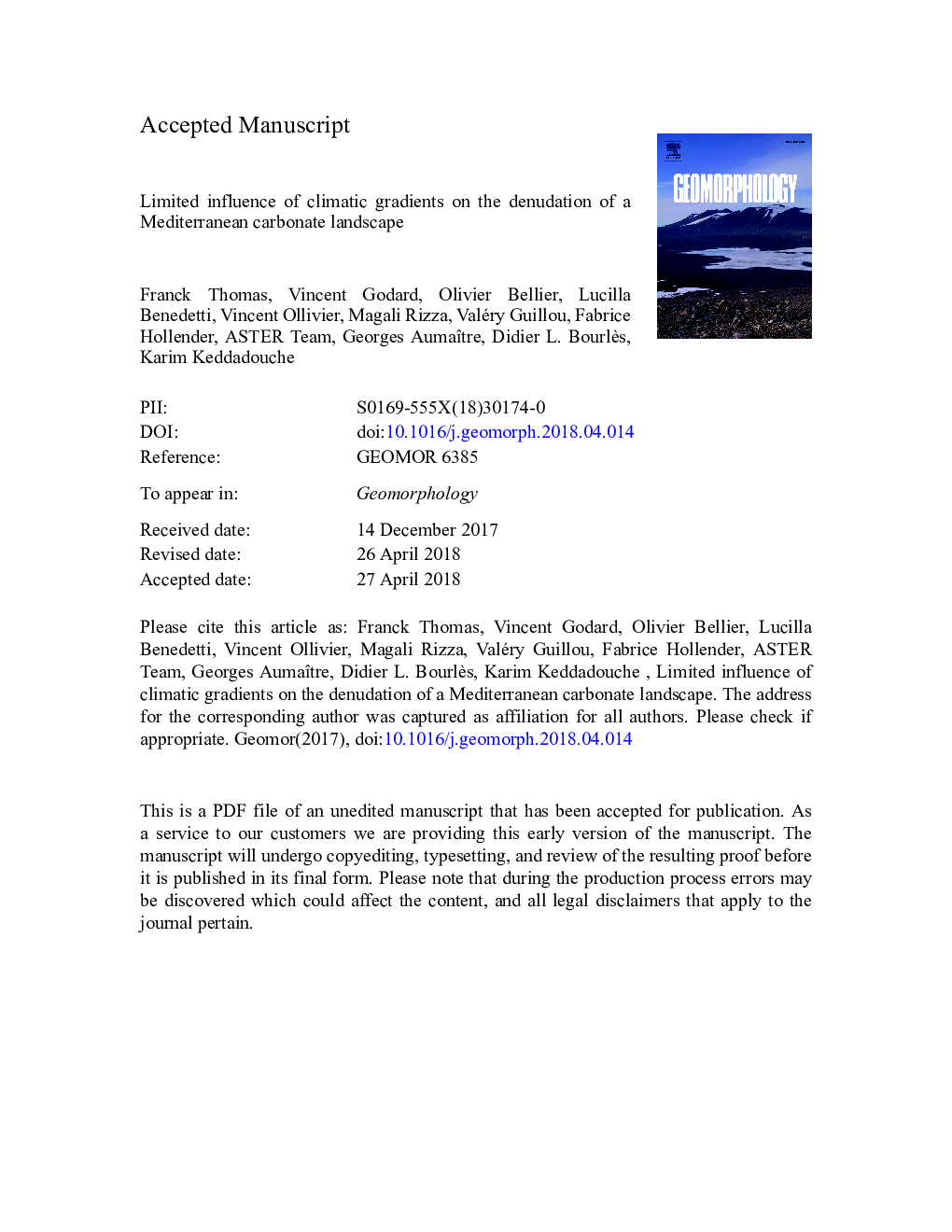| Article ID | Journal | Published Year | Pages | File Type |
|---|---|---|---|---|
| 8907982 | Geomorphology | 2018 | 50 Pages |
Abstract
The dynamics of carbonate-dominated landscapes is still debated, and first-order questions pertaining to the respective importance of chemical and mechanical weathering processes or the influence of climatic variability on denudation rates are largely open. To address these issues, we investigate the denudation pattern across a climatic gradient in Provence, SE France. We focused on a series of major carbonate mountain ranges with elevation spanning 200 to 2000â¯m and associated with >2-fold variations in mean annual temperature and precipitation. We collected 25 samples from 10 different mountain ranges and quantified denudation rates through the measurement of their 36Cl concentrations in order to explore tectonic and climatic controls on these carbonate landscapes evolution. We observe that most of our samples experience denudation rates in the 30-60â¯mm/ka range (averaged over 5 to 40â¯ka), with no evident dependence on variations of mean annual temperature or precipitation. One range (Lure mountain) stands out as a significant outlier, with much higher denudation rates (>100â¯mm/ka) than adjacent sites (Ventoux mountain) at the same elevation and experiencing similar present-day environmental conditions. We explore in details the climatic, tectonic and geomorphological contexts of these two ranges in order to understand the reasons for this apparent 3-fold difference in denudation rates. A regionally-documented major Holocene hillslope destabilization event appears to be a likely candidate to explain the observed lower 36Cl concentrations at the top of the Lure mountain. At longer wavelengths, our regional dataset shows no clear control of modern precipitation gradients on denudation rates, consistent with previous observations in landscapes underlain by other lithologies.
Related Topics
Physical Sciences and Engineering
Earth and Planetary Sciences
Earth-Surface Processes
Authors
Franck Thomas, Vincent Godard, Olivier Bellier, Lucilla Benedetti, Vincent Ollivier, Magali Rizza, Valéry Guillou, Fabrice Hollender,
